The image below selected gap size of 0.5 mm works well for directing the fringing fields through 10mm of glass overlay. Here button size = glass thickness add 5mm for better response. You will need mechanical support for the glass and certainly need plexiglass or equivalent to couple tracks on button to glass. so overall thickness of 10mm is practical, possibly a bit more.
With suitable plexiglass spacers between board and glass to fill the air gap over the buttons, I think it is very feasible. but without that would be very risky.
Gapless with glass and Plexiglass gap fill over each finger track and
ground track over 10mm is possible, but with air gap perhaps only
~1mm is practical with ground guard around RF pad due to low
capacitive coupling of air to glass.
8mm glass is equivalent to 1mm air gap and you need 5mm air gap plus
glass, so Consider silicon pads to fill enxtend the geometry, support the glass and bridge the gap so the finger pad can close the RF capacitor plastic pads below the surface. As long as the gap capacitance is greater than the finger gap of <1pF. BTW 1pF is around 10KΩ at 24MHz
SMD gold wire bond internal joints may get stressed from the glass. Can you use smoked or Mask painted glass with silicon to fill gap over the sensors under the glass? that may work raising the dielectric constant over the pads and give the bonus of structural rigidity and diffused the LED indicator over the touchpad spot or for use as feedback indicators.
Side thought for that matter maybe you can use IR emitter refector pairs for touch pad points for touchless glass just by pointing close to emitter.detector pair set to short proximity threshold.
You can also use plexiglass spacers extending the pad shape to the glass, which both have similar epsilon values of 8 and use a thin adhesive on component side and similar spacers around LEDs to protect and the thin glass from strain.
THis is from a Cypress spreadsheet
Input Parameters Value Units
Overlay Thickness 2 mm
Overlay - Dielectric constant 2.8 farad/m
Capacitance of trace per inch 2 pF
Minimum Recommended Button Diameter
(based on minimum 0.25pF Finger response)
Noise Conditions - Low (0.05 pF Noise) 7 mm
Noise Conditions - Medium (0.075 pF Noise) 9 mm
Noise Conditions - High (0.1 pF Noise) 11 mm
Maximum Trace length
Noise Conditions - Low (0.05 pF Noise) 400 mm
Noise Conditions - Medium (0.075 pF Noise) 387 mm
Noise Conditions - High (0.1 pF Noise) 374 mm
Button to Ground clearance 2 mm
